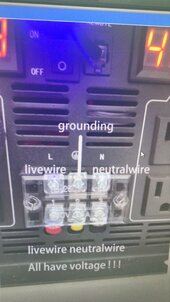Philip53
10.4kw DIY Home Solar Sprinter Van DIY Victron
- Joined
- Aug 22, 2022
- Messages
- 107
Maybe some lightning wise person can comment on something I read years ago. That the lightning protection aerials and the system in general is not to get hit by lightning to protect the house, but rather to 'drain' off the electrical potential in the air surrounding a structure so that lightning is less likely to occur there. If you think about it, if that aerial got hit by lightning it would likely vaporize that rod, and the braided wire all the way to the ground.
Any experts out there?
Any experts out there?



